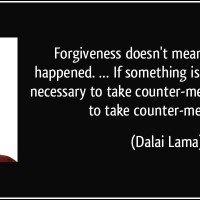 The recent Sunday Telegraph campaign against graphic artist Robert Crumb’s proposed participation in an exhibition at the Sydney Opera House, used the opinions of anti child abuse campaigner Hetty Johnson to infer that Crumb’s work is complicit in creating communities that are unsafe for children and should be banned.
The recent Sunday Telegraph campaign against graphic artist Robert Crumb’s proposed participation in an exhibition at the Sydney Opera House, used the opinions of anti child abuse campaigner Hetty Johnson to infer that Crumb’s work is complicit in creating communities that are unsafe for children and should be banned.
The Tele apparently faxed Ms Johnson (who had previously never heard of the artist) a few copies of Crumb’s cartoons, leading her to decide that: ”the Sydney Opera House is endorsing the depraved thought processes of this very warped human being. These cartoons are not funny or artistic – they are just crude and perverted images emanating from what is clearly a sick mind.”
Crumb cancelled his trip, giving reasons in this open letter to the Sydney Morning Herald.
Anti child abuse campaigners like Ms Johnson have an important role to play in any community. Children must not be abused. We must do everything we can to address child abuse of every kind wherever we find it, because we are cruel and inhuman if we don’t.
But it’s a symptom of psychosis to mistake illusion for reality. Campaigners such as Ms Johnson are striving to impose a psychotic world view when they campaign against images such as those produced by Crumb, and closer to home, Bill Henson. Such campaigners necessarily view the world around them through the eyes of those who are sexually aroused by children. They seek in images of all kinds what they imagine paedophiles desire. They assume these images will provoke undesirable action in their viewers. They have no basis for these assumptions. They have no evidence. They simply object.
After working for many years with survivors of childhood sexual assault, I can attest that one can eventually see suspicious behaviour everywhere, in the most innocent of gestures, and on reaching that point a sensible practitioner knows it’s time to take a break. Yes, there are adults who abuse children. No, it’s not everybody. Yes there are images that paedophiles seek out and exchange. No, they are not every image in art or advertising that feature children.
These efforts by campaigners to colonise the public gaze have nothing whatsoever to do with preventing child abuse. Children are overwhelmingly sexually abused by people they know, frequently close family members. They are not necessarily abused by sexually crazed admirers of Robert Crumb and Bill Henson, or even by those sad human beings who earn their livelihood designing “sexy” underwear for little girls, and the even sadder mothers who buy it for them.
Here, I have to say that I don’t find the linked advertisements guilty of “sexualizing” the young models. I believe we need a conversation about what is and isn’t sexy and to whom, because it seems to me that campaigners are adopting a definition of “sexy” that is not necessarily shared by the whole community.
I find these images of the girls silly and sad. There’s not one thing that’s “sexy”about them. They are degrading not because they sexualize, but because they commodify. The young girls’ beauty is not sexualized, it is ruthlessly co-opted and exploited to sell product. The girls are dehumanized because of this, as are we all to varying degrees by the capitalist society in which we live.
It’s also worthy of note that these campaigners cannot, apparently, achieve their goals without perpetuating and trafficking in the “offensive” images. So on websites such as that belonging to Melinda Tankard Reist you will find links to purported “evidence” of the “sexualization” of young girls, sometimes tantalizingly prefaced by comments such as “if you can bear to look.” Unless you are willing to take Reist’s word for it, you have to open the links.
Without public outrage, these campaigners will cease to exist. They have everything invested in encouraging the viewing and sharing of the images they condemn. The question must be asked, are they too engaged in the process of commodification and exploitation of the child models? Is this the underlying reason why they are unable to address these matters as corporate and consumer issues?
What campaigners such as Hetty Johnson and Tankard Reist are actually engaged in are diversionary tactics. In blaming the art they do not understand for creating a climate in which the so-called “sexualization” of children is promoted and nurtured, they are distracting attention from the real culprits: corporations and consumers. Human beings have long been reduced to the status of a commodity in the interests of profit. Greed, not paedophilia underpins the increasing sexualization of children. The personal worth of adults has long been measured by their exchange value: it was only a matter of time before this extended itself to the imposition on children of impoverished and crude adult notions of what is “sexy,” designed purely to extend the profitability of human exploitation and commodification.
 Back to Robert Crumb. Crumb’s work is a fine example of the power of catharsis. The artist owns himself as “weird,” highly anxious and neurotic, and possessing a vividly boisterous sexual imagination. These characteristics imbue his work with powerful feeling, and viewing Crumb’s images is often a disturbing experience.
Back to Robert Crumb. Crumb’s work is a fine example of the power of catharsis. The artist owns himself as “weird,” highly anxious and neurotic, and possessing a vividly boisterous sexual imagination. These characteristics imbue his work with powerful feeling, and viewing Crumb’s images is often a disturbing experience.
But remember: “Art is dangerous,” Picasso claimed. “Art is never chaste. Where it is chaste, it is not art.”
The artist’s job is often to expose to the rest of us what we might not want to see or acknowledge as human. The best artists won’t flinch in their task of expressing what we would most like to deny about humanity. Those who are too afraid to rise to the artist’s challenge will demand censorship. They will clamour for the silencing of the artist’s imagination because, they claim, there is an inherent link between the imagination, and the acting out of imaginative visions. In other words, they take Picasso’s claim that art is dangerous far too literally.
Art is dangerous to the closed mind. Art can take us to emotional experiences and spiritual realisations that are not always easy and comfortable. But art will not turn us into paedophiles. The horrifying photographic images of sexually exploited and tormented children passed around a paedophile ring are not art.
While the artist may be expressing a personal vision, the fact that others can identify with and appreciate the artwork transforms the personal into the universal. Finding imaginative ways in which to safely express the darker and more dangerous emotions is the cathartic experience, and the cathartic experience is one that can enable a safe release of unconscious conflicts in the viewer as well as the artist. This is the power of art, and I include in the category of “art” all mediums of expression. Dark and dangerous emotions are human. They demand acknowledgement and safe expression. Art offers safe emotional release, both in its making and its appreciation.
This is the experience campaigners such as Johnson and Tankard-Reist wish to deny us. Trapped in a spiral of denial, they need to universalize their positions in order to feel validated. They need us all to agree with their critical judgements. They demand that we all adopt the paedophile’s gaze, and interpret the art that surrounds us, whatever its form, through that lens. They do not discriminate, their responses are formulaic and tiresome: if it is weird and sick to them, it has to be weird and sick to everyone, and the weird and sick must be silenced and denied.
What currently passes for “sexy” in our culture seems to me to be highly unsubtle, crude and largely uninteresting. Yet these campaigners have somehow managed to turn this one-dimensional representation of human sexuality into a cultural threat of nuclear proportions, especially for our children. Artists such as Crumb and Henson, of all people, have been caught up in this manufactured threat.
Campaigners themselves insist on reproducing many of the very images they decry, because, they claim, people must see them in order to be able to protest them. Outrage is their weapon of choice, and they must create enough of it to bring about their censorship goals.
Yet all they ever achieve is a band-aid solution. They do not address the underlying issues. They do not go deeply into the immorality of the increasing commodification of the human. They do not address a global economy that survives only as long as we all consume as much as is possible for as long as we are alive, making the construction of new markets an absolute necessity, even when that market is children and childhood. They do not address the complicity and collusion of mothers and caregivers in the sexualization and commodification of children and childhood. They do attack art, in all its forms, because that is easy.
The conflation of the “sexualization” of children and paedophilia with the perceived dangers of art needs to be challenged and resisted whenever it rears its hydra-head. The real role of anti child abuse campaigners is to work for educative and economic services that will help protect children, and that will offer accessible services for adults recovering from the frequently life long aftermath of childhood abuse.
There is no place for these campaigners as arbiters in the world of art. They have proved over and over again that their perspective is warped and one-dimensional, and that censorship is their only response to expressions of the human that they do not understand.
Related articles
- Crumb cancelled visit fearing assassination (theage.com.au)
- Crummy artist left to pick up the scraps (thepunch.com.au)
- The artists’ artist: graphic novelists (guardian.co.uk)





































Makes me wanna throw some Bataille, Gainsbourg or Balthus at the wowsers! 😉 Or perhaps make them (patriotically) listen to early Nick Cave’s work. That lovely lunatic must’ve been guilty of *something*, screaming those unholy lyrics such as “I stuck a six inch gold blade in the head of a girl”… Art is interesting and possibly (probably?) dangerous, while petite bourgeoisie are most definitely boring as hell…:)
LikeLike
Making them listen to Cave’s “God is in the house” while chained to a pole clad only in Victoria’s Secret undies and stilettos might be an appropriate revenge
LikeLike
Only if Miranda Kerr is in them.
LikeLike
Ah, Hetty Johnson. Accepting thousands of dollars’ worth of donations from the sex industry for your senate campaign is OK. Underground comic book artist from the 1970’s whom most people have never heard of or read his books coming to Australia? That’s worse than Dennis Ferguson and Garry Glitter combined! And let’s not forget using her daughter as a publicity stunt which she originally gave out for adoption when she was born in the 1970’s. I really think Johnson does a great disservice to her cause. By linking the works of Henson and Crumb with paedophilia and child abuse, she devalues real child abuse. It’s making light of the causes of sexual abuse. As you said it takes the focus off the real issues. I don’t know why people take any notice of her. The government and other sources of Bravehearts funding should cease funding her immediately. From the outside looking in I can only see a one woman publicity machine who likes the sound of her own voice (irrespective of what stupid shit comes out of it), that seems to do nothing all about the abuse of children.
Jennifer, do you really believe that children are being sexualised by the media? All of the reports on the subject; Linda Papadopoulos’ report, the Bailey Review, the APA Task Force on the Sexualization of Girls, The Australia Institute’s Corporate Paedophilia etc., have pretty much come up empty handed or cherry picked data to provide the evidence for their pre-written conclusions. The stuff that our favourite Belconnen Baptist (MTR) parades around as “evidence” is cherry picked and extremely obscured. Pretty much 100% of “sexualisation” or “commodification” or “pornification” (whatever the fuck that means) is in the eye of the beholder and is extremely subjective. It also ignores how women were portrayed in the mass media in the last 50 or so years. To me the whole “sexualisation” moral panic (which is what it is) is a front for those who want to control depiction of female sexuality in the media.
Also Jennifer, the Belconnen Baptist and Donkey Girl (Bray) have a Dines-esque anti porn book coming out next month. That should be interesting. How come now one points out to these dills that society has pretty much continued to function extremely well despite pornography becoming a popular mainstream product since the early 1970’s? Well that’s my anti right wing conservative Christian rant for today. Still have to get past the teabaggers’ blockade to get into work tomorrow…
LikeLike
I just wrote a long reply and lost it. Too much good food and wine at lunch.
I’ve been doing some serious thinking about the “sexualization of children” issue. As far as MTR et al are concerned, they object to the current mainstream notion of what looks “sexy,” whether the look is worn by adult women or mimicked by children. I don’t find this look “sexy” and more often than not, whether worn by children or adults I think it it looks pretty silly, but that’s me. So I guess I’d be more inclined to call it the sillifying of children than the sexifying or pornifying.
I strongly object to their attempts to dictate how women should portray ourselves and allow ourselves to be portrayed in the media. Women are free to dress ourselves however we wish, within the law, and their efforts to demean and humiliate women who don’t comply with their ideas are disgraceful. They impose a morality on the body that I don’t accept, and this makes them demand some kind of modesty and discretion that has no substance outside of their moral framework. They seem to think the body ought to be hidden, covered, and shown only to the person who shares your bed. There’s no other explanation for their clamour – but the body is wholly innocent until attitudes are inscribed upon it.
My only guide is the aesthetic – sometimes bodies are not that aesthetically pleasing to me, and I wouldn’t mind seeing a bit less of them. Sometimes women look really daft and ungainly struggling about in the street in very high heels and little skirts – but again that’s aesthetic. I love gracefulness and natural movement, and the flow of garments around the body.
I confess to becoming infuriated when getting some younger members of my family ready to go to the park on our bikes, and a seven year old throws a fit because she can’t decide what “outfit” she should wear. I blame her parents, loudly. But excessive attachment to appearance is a feature of Western culture, I just don’t recall it being so intense, or occurring so young. I might have led a sheltered life in that respect – I did go to a convent boarding school!
I can’t utter a blanket condemnation of the media’s representations of children – there were some French Vogue fashion shots that I thought were just ridiculous, and I didn’t enjoy seeing little girls presented in those ways. But in general, I think they look a bit sad and silly – I’d rather the kids were out and about doing kid things instead of helping corporations make big profits.
Childhood is a relatively modern invention – perhaps we are regressing to a time when there was little if any distinction between adults and children, and that regression is expressing itself through fashion. Really, how else could it be expressed, given the world in which we live? But that isn’t “sexualizing.”
Yeah, I heard about the book: Porn Inc, it’s called I think. The unfortunately named Ms Bray has got stuck into me once or twice, and once tried to set up an intellectual pissing contest with me about Helene Cixous. Dines is a contributor to their book. These women have found a way to make a name for themselves, and they’ve gained some power. They’re often bullies, and use bullying tactics IMO. They ridicule and demean, and are often very offensive in the manner in which they put their case. I’ll have a look at the book, but I’m not expecting anything new –
Watch out for those trucks tomorrow – and the grey nomads in their caravans. It strikes me as rather ironic that the people who are among the most vociferous climate change deniers are those least likely to be around when things get really bad.
LikeLike
The commentators you mention have benefited from the TV approach of having “experts” on tap (and I assume on contract), one for each subject. No mucking around, if it is pedophiles then Hetty is your go-to lady. No alternative viewpoints (and the same goes for medicine, foreign affairs, economics, psychology etc) are ever heard.
It has been obvious for a long time that those who profess anger at the “exploitation” of children by artists, seem to have no concern at all for the vastly more prevalent exploitation of children of all ages in all kinds of advertisements for all kinds of products. Guess that’s just good business.
LikeLike
David, I truly think that children who appear in advertisements or the obscure foreign editions of fashion magazines or niche fashion lines that no one has ever heard about, are no more exploited than the adult models. Has there been an outcry from the parents of child models who have been exploited? No. Will the child care about his stuff when they grow up? Judging from stuff like Henson’s former models or the girl on the cover the “Virgin Killer” album, no.
I agree that people like MTR or Michael Carr-Gregg are perfect for pre-packaged sound bites or short interviews for TV shows like Sunrise or ACA. What qualifications do they have? A lot of the time, none. But they can be convincing and turn up the moral panic to eleven, regardless of lack of evidence that there is any sort of problem.
I’ve been through Satanic Panic, the horrors that pop music would cause that the PMRC warned us about and teens having “Rainbow Parties”. All of them were a load of horseshit and had no basis in reality whatsoever. Why don’t people ever learn and question those who claim that social disaster is just around the corner due to whatever technology or trend (real or imagined) is popular today? They either provide the evidence or sod off and stop annoying society.
LikeLike
Matthew I didn’t mean sexual exploitation, I just meant them being used to advertise products about which they could have no opinion and no idea they were being used. The Woollies ads at the moment for example.
LikeLike
David seems to come closest to attempting a look at the idea that commodification is a myth in his considered post.
Maybe.
Leading in, Matthew and Jennifer included the notion of “commodification” fairly close to the margins of the other more tabloid signifiers, “sexualisation” and
“pornification” which overdetermines the term commodification.
Further to Matthew’s point about trivialisation of real issues, at a more critical level “commodification” is a fairly viable notion within some sociological and sociopolitical critical theoretical structures that are of more legitimate tools for unpacking ideas,for thoughtful people. I see Jennifer’s trajectory, which leads to the appropriation by the right, moral and or then political (can be switched by manpulators, arguably), of sole proprietorship of outrage against “sexploitation” and a legitimisation of a certain politics at the expense of others.
Whether this brainwashing is subconscious or not, is real or imagined, becomes moot, as the emotion produced of moral outrage allows a coathanger for political exploitation.
The purpose becomes one of enforcing a sort of political correctness that militates toward authoritarianism: the “need” to dumb down media, yet somehow always retaining the cheesecake element, that both titilates and annoys yet “sells”, even at the expense of content and substance. Censorship of sexually referenced material is likely a demonstrable tactic for a slippery slope to political censorship to (eventually) ignorance, as well as a gleeful embrace of control freakery by moral rightists, up to and including interference with girls concerning fertility control. Censorship of literature, some times as an overtly political gesture, then non fiction; FOIs C in C, surveillance of the public, Dr Haneef, Gitmo, Afghanistan and further is slippery but traceable.
The point relating to aesthetics and then, a little resistive subversion/ transgression in dress is therefore a nuanced point.
But yes, If I think of Jon Benet Ramsey and think of the lengths folk go to, to “commodify” the less strong for a quick buck, you can’t deny there is a case to suggest that at these extremes, the tendency starts to look a bit dangerous for kids head’s and consumer’s heads. These are already filled with enough crap from corporations “selling/inscribing”(if possible) Marlboro man or Barbie doll- type behavioural jails to cognitively defenceless kids inexperienced through youth at discerning legitimate communication, let alone the fear and so forth that goes with all individuation and learning, growing up anyway.
To turn it into prick tease to sell newspaper and media time shows either the naiviety or a certain worldliness within the wowsers and cynicism within capitalism but surely we already know this?
Once again,”humanness”, but if we do devour a few of our young for the corporate buck, along the way,whilst ignoring other global issues or ethicalissues, it might be interesting to see how this process originated, even if it does upset retailers and big media. If folk only out of the self-interested drive to ensure that it doesn’t apply to them also at some future time, so we can ration the kiddies and slow up the apparatus, is not a totally dismissible idea?
LikeLike
I know MTR is compared to the Simpsons’ Helen Lovejoy, but I prefer to think of her more as the Pauline Hanson of anti-everything campaigners. Contrast the considered, dignified, and genuinely bewildered article by Robert Crumb with the rabble-rousing aggressiveness of those who would oppose him.
Apart from the obvious, the main difference for me is that Robert Crumb is open and honest about his thoughts, feelings, and motivations, whereas the anti-crowd are not. We know that Robert Crumb is aware of his dark side. Similarly Bill Henson is open about the fact that he is striving to create a kind of disconcerting tension through his images. But we know almost nothing of what MTR et al actually feel, and the reasons for their taking on the positions that they have. Instead, they appeal to conceptions of morality that are based on conventional notions of decency – whether these come from cultural sources or from interpretations of the writings of people many years ago who received instruction and wisdom from celestial deities.
But that’s just not good enough. We need to have a proper explanation from these people about who they are, how they live, how they feel about what they believe, and what they think they’re trying to do. Because until we get this we’re just going to continue to imagine that these are people whose subjective sense of shame and anxiety over their own thoughts and feelings compels them to live a diminished life, to studiously avoid potentially debauching influence which could easilly set them spinning out of control, and to martyr themselves to these same debauching images in an attempt to cajole others to do the same –
LikeLike
I don’t think they could tell you, Sam. That wonderfully belligerent feminist interrogation: so where are YOU coming from? would come in handy, but they never answer it, or avoid putting themselves in a situation where it can be asked.
Then there’s always the wonderfully belligerent Australian interrogation: “What ARE ya?”
The assumption that there is something inherently wrong with the human body and it’s sexual capacities is based entirely on superstition, ignorance and fear.
LikeLike
Agree. In fact I just came across this passage in a book by childhood trauma specialist Alice Miller, which is probably a better note to end on 😉
“Individuals who believe that they feel what they ought to feel and constantly do their best not to feel what they forbid themselves to feel will ultimately fall ill – unless, that it, they leave it to their children to pick up the cheque by projecting onto them the emotions they cannot admit to themselves”.
LikeLike
Yeah, that’s a good observation by Miller. There’s someone else who writes about the notion of children living out desires their parents couldn’t or wouldn’t acknowledge and I can’t think who it is – and I can’t think how best to frame a Google question! It will come to me.
LikeLike
Great comment, Sam Jandwich. That’s the whole point. We have to answer to them, not them us.
Would you buy a used car without verification and a water tight guarantee?
Of course not. But that’s what expected, if they can house train us to swallow or accept their guilt laden non-news, they’ve won forever.
LikeLike
Not while I have breath in my body and a keyboard.
LikeLike
*Sigh*. Unfortunately I’m prone to buying used cars on the spur of the moment, dazzled by their inherent potential and blinded by my eternal optimism and faith that their obvious faults can easily be rectified – hence my black fingernails, skinned knuckles and forearms daubed with rust preventative. Hehe, if conservatives were cars they’d be 1970s Alfa Romeos.
Sorry Jennifer I didn’t notice this article was on the Drum as well – congratulations! and I’m cross with myself that I couldn’t be there in the bear pit. Grrrr
LikeLike